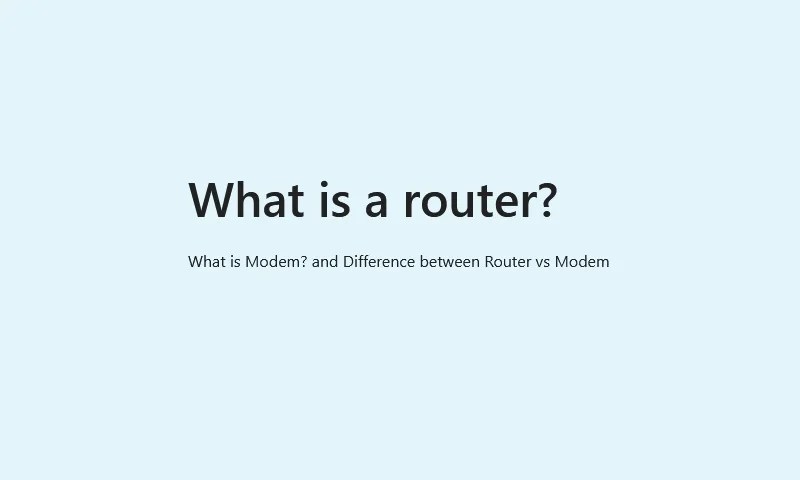
What is a Router? | Router vs Modem
Introduction
In the world of internet connectivity, routers and modems play essential roles in ensuring seamless communication between devices and the internet. While both are critical for establishing internet connections, they serve different functions. Understanding these devices and their differences is key to managing home or business networks effectively.
What is a Router?
A router is a networking device that connects multiple devices to a single internet connection and enables communication between them. It directs data traffic efficiently across devices, ensuring that information reaches its intended destination.
Functions of a Router
A router performs several key tasks:
- Data Distribution: Routers manage internet traffic by forwarding data packets between devices and the internet.
- Network Address Translation (NAT): Converts private IP addresses of devices within a network to a public IP address for communication with external networks.
- Wireless Connectivity: Wi-Fi routers allow wireless devices to connect to the internet.
- Firewall Protection: Routers often include built-in firewalls to filter harmful traffic and enhance security.
- Parental Controls and Traffic Management: Many routers allow users to restrict content, prioritize devices, and limit bandwidth usage.
What is a Modem?
A modem (short for modulator-demodulator) is a device that establishes an internet connection by converting digital data from your computer into analog signals for transmission over telephone lines, cable systems, or fiber optics. Conversely, it converts incoming analog signals back into digital data for your devices.
Functions of a Modem
A modem’s primary functions include:
- Signal Conversion: Modems translate digital signals from devices into analog signals for transmission over broadband lines and vice versa.
- Internet Access: The modem is directly connected to the ISP (Internet Service Provider) to provide internet connectivity.
- IP Address Assignment: Modems assign a public IP address to your home or business network for internet communication.
Key Differences Between Router and Modem
While both devices are essential for internet connectivity, they serve different roles in the network infrastructure. Here are the main differences:
| Aspect | Router | Modem |
|---|---|---|
| Function | Distributes internet connections across multiple devices. | Provides internet connectivity by communicating with the ISP. |
| Data Handling | Manages data traffic between devices within a network. | Converts digital data into signals for transmission and vice versa. |
| IP Address | Assigns local IP addresses to devices within a network. | Provides a public IP address for network identification. |
| Wireless Support | Offers wireless (Wi-Fi) connectivity. | Requires a router for wireless connections. |
| Security Features | Often includes firewalls, VPN support, and parental controls. | Typically lacks advanced security features. |
| Connectivity | Connects to the modem to access the internet and allows multiple devices to share the connection. | Connects directly to the ISP’s network and requires a router for distributing the connection. |
Do You Need Both a Router and a Modem?
In most cases, yes. While some modern devices combine both router and modem functions in a gateway, separate devices often provide better performance, security, and flexibility.
Use a Router If:
- You want to connect multiple devices to your network.
- You require advanced security features or wireless connectivity.
Use a Modem If:
- You need to connect to your ISP for internet access.
- Your ISP requires specific modem compatibility for service delivery.
Conclusion
Both routers and modems are vital for establishing reliable internet connections. While a modem provides the initial internet access, a router expands and manages that connection across multiple devices. By understanding their roles and differences, you can make informed decisions when setting up or upgrading your network.
Read This : What is a Firewall and Its Role in Network Security?





